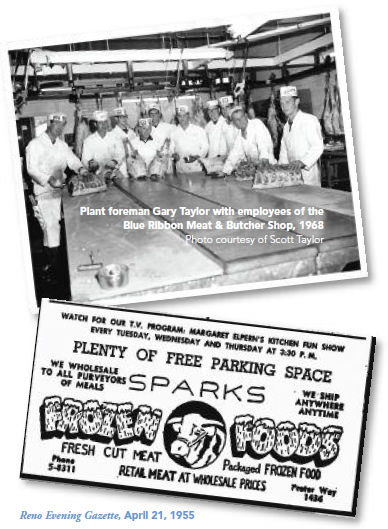edible traditions
A TASTE THRILL
Town House Cocktail refreshed Reno divorcées in the 1930s.
WRITTEN BY ALICIA BARBER
PHOTOS COURTESY OF SPECIAL COLLECTIONS, UNIVERSITY OF NEVADA LIBRARIES
The year was 1934, and downtown Reno was hopping. All across town, roulette wheels spun in dizzying red and black, live jazz drifted through neon-lit alleyways, and, after years of enforced Prohibition, the liquor flowed in full view.
One of the hottest spots to cool your heels was the Town House, a rollicking nightclub on West First Street owned by boxing manager, polo player, and man-about-town Charles Rennie. Originally christened the Dude Ranch Town House, the popular club catered to the stylish set, particularly those dallying in Reno for the state’s celebrated six-week divorce.
The club’s bartender, an erstwhile bootlegger named Chet McFarland Candow, found himself barraged by requests from female patrons for a cooling cocktail with no taste of liquor. Months of experimentation yielded the official Town House Cocktail, a heady blend of Hiram Walker’s London Dry Gin; fresh juice from California’s “finest” oranges, prized Hawaiian pineapples, and other fruits; and “a quick dash of genuine essences.”
The “new taste thrill” was an immediate hit. Sensing a market among departing divorcées, Rennie arranged for the cocktail to be bottled and shipped to selected cities nationwide, from California to New Orleans. Ads for the so-called “Aristocrat of the West,” available in a fifth or a pint, touted its suitability for myriad occasions. “At once refreshing and nerve-softening,” it promised to “create a base that blends perfectly with wine at the meal.” At bridge and tea parties, its “easy glow” was said to keep guests “at brilliant pitch for discreet camaraderie.” At sporting events, it was deemed “Handy to carry. Just the ‘touch’ to increase enjoyment.”
Interviewed in May 1935, Rennie boasted of having convinced officials at the San Francisco plant of Hiram Walker & Sons to manufacture the drink under its own label. He also bragged that its custom-made bottle, produced by the Illinois Pacific Glass company, had won first prize at the recent National Wine and Liquor Show in Chicago. While the latter claim may have been plausible, the first decidedly is not: Hiram Walker operated only one facility in the United States in the 1930s — in Peoria, Ill. — and no record of the drink appears in the company’s archives. Whether inspired by fact or his own fevered imagination, it seems Charles Rennie always ran at full tilt.
And then his fortunes changed. Bankrupted after investing in a swanky new country club that burned down less than a year later, Rennie was forced out of the Town House in 1937. Although the club continued to operate under new management, its namesake cocktail seems to have departed with its colorful creators.
Two decades later, the Town House also succumbed to fire, and a new J.C. Penney department store rose in its place, operating until 1991. That building is now home to Reno Provisions, where today’s smart set can sidle up to the bar and raise a glass to the Town House, one of Reno’s most notorious gin joints, home to the cocktail inspired by liberated ladies in search of freedom and a little bit of fun.
Reno Provisions is offering its own interpretation of the historic Town House Cocktail in January and February. For details, visit http://www.renoprovisions.com


